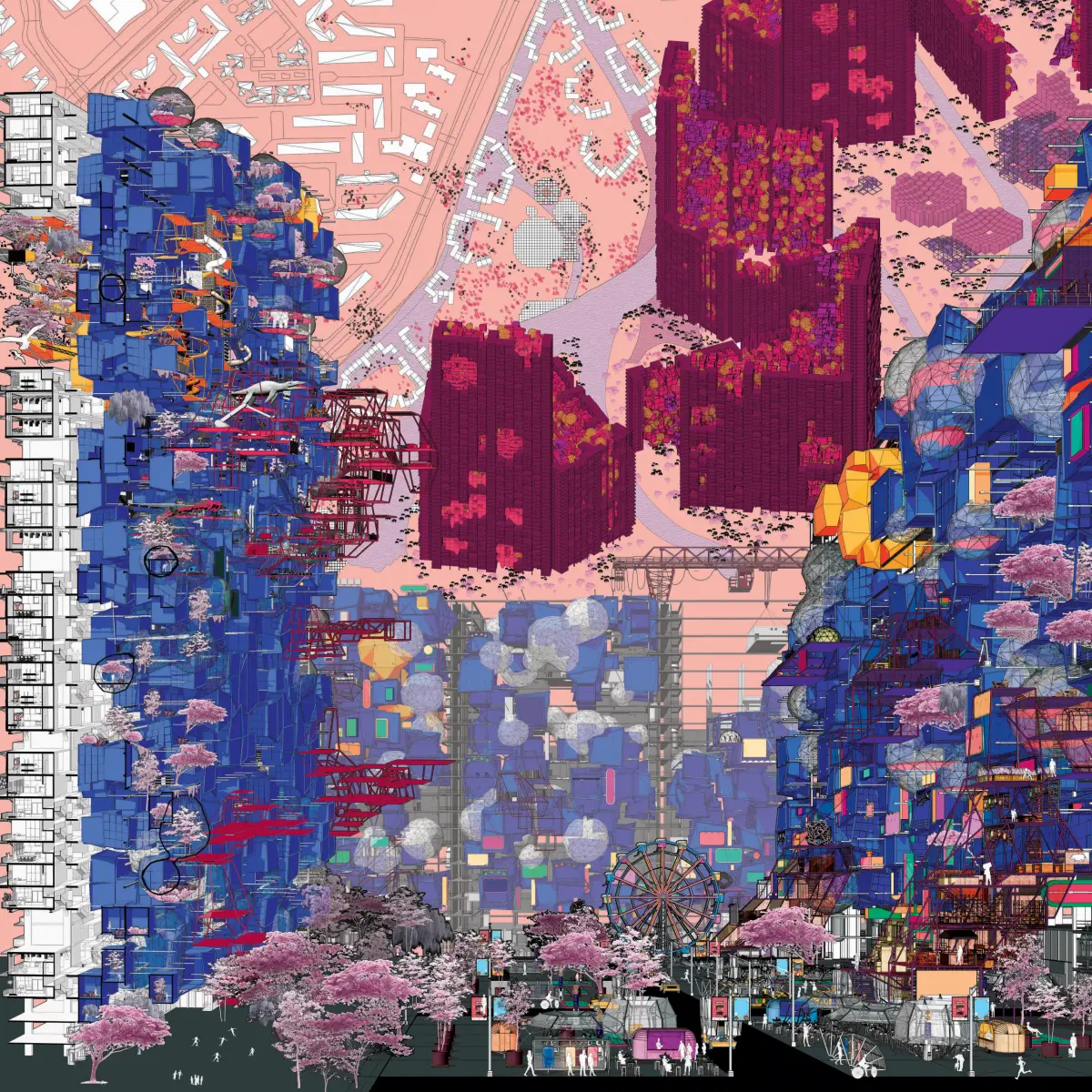
Foam City
BY Chan De Quan
SUPERVISED BY Adj. Assoc. Prof. Khoo Peng Beng
STUDIO THEME HOLON STUDIO
Abstract
Singapore is governed by strict, overbearing policies aimed at creating fragile peace through placid stability within its society. Through the lens of “Foams”, the value of this disingenuous harmony is questioned, embracing disruption and conflict as alternative societal values which creates a new state of living and dwelling which allows for vibrancy and cohesivity. “Foams” is used as a lens of framing temporal, unstable state of communities formed today, as well as concepts such as autonomy, Game Theory, and self-organization explicated by Brazil’s favelas and the micropolitics of community gardens in Singapore, a new framework of urbanism which allows for a hybrid top-down and bottom-up approach to design is established. Situating the foam city within the context of Paya Lebar Air Base, the creation of foam cities is examined.
In Peter Sloterdijk’s book, “Foams”, he uses the metaphor of the foam to describe societal relations formed today. Foams depict a complex matrix consisting of highly interdependent, self-immunizing “bubbles”, taking on an unstable and temporal state. Communities formed today resemble these “bubbles”, in a state of instability, repeatedly merging, forming, inflating, and bursting. Ever-shifting socio-political and urban landscapes imbue a sense of hyper-awareness of one’s living environment, allowing for differences to be exacerbated and conflict to occur. Studying case studies of self-organizing communities both within and outside of Singapore’s context, a pattern of rules and interactions are revealed. Within favelas such as those in Brazil, self-regulated communities abide by unspoken rules of organization, such as the spacing between houses and window views that are non-intrusive to one’s neighbors. Unspoken social relations and urban etiquette exist within the context of Singapore as well, manifesting itself as spaces of exclusion and isolation intrinsically or extrinsically.
The site borders Hougang, Defu industrial estate and Paya Lebar Air Base features a diverse intersection between the green and blue landscape, as well as the HDB and maker communities. Spaces are planned on a holonic scale, creating multi-central towns, neighborhoods, buildings, and dwellings, which allow for appropriation, interaction, and congregation of space at different scales. Individuals and communities and posited with different levels of participation and acceptance of external influences, such as other communities or urban interventions, which create a diverse range of interactions and involvement within its context.
Supervisor Comments
De Quan’s project invites us to ponder the possibility of a self-regulated city where architects and planners design open structures that invite participatory action. Following Peter Sloterdijk’s conception of the human as inherently relational and spatially determined, this thesis project proposes a structure both physical and relational that reimagines the Singapore public housing as a system both formal and informal, participative and planned. He explores his concept of “foams” at multiple scales ranging from furniture systems, to unit systems to precinct, neighbourhood and districts.
- Adj. Assoc. Prof. Khoo Peng Beng